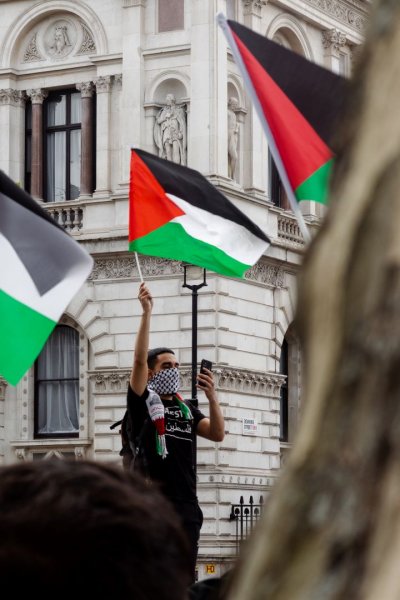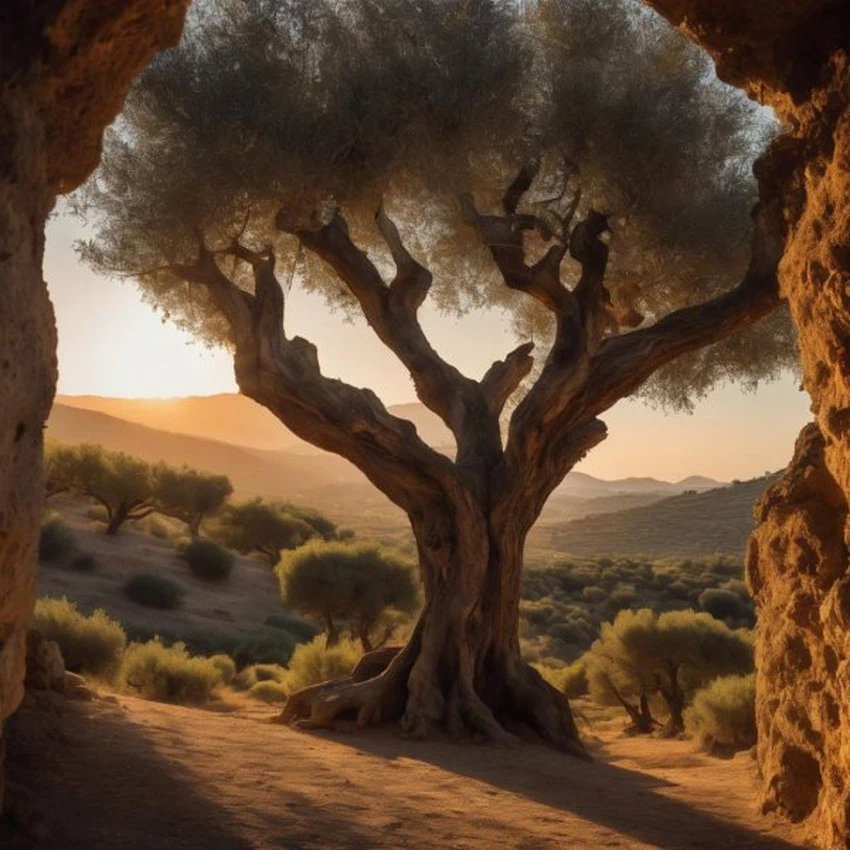Symbols of Palestine...the meanings of the Keffiyeh elements
Weather of Arabia - At the foot of a hill in the heart of the city of Hebron, 16 textile machines are working at full production capacity in the only factory in the West Bank that specializes in producing the Palestinian keffiyeh of various colors. The beginning goes back to the year 1961 when Izzat Harbawi’s father, the owner of the Harbai factory for weaving the keffiyeh, brought two machines. From Syria, by 1964, and over time the business had grown to include 16 textile machines.
Speaking to Reuters, Ezzat said:
“Today we have 300 styles of keffiyeh that we weave from 70 different colors of thread that we import from India.”
The Palestinian keffiyeh, in black and white, is considered a symbol of the Palestinian struggle and an integral part of the heritage and history of the Palestinian people. The Palestinian National Information Center indicates that November 16 is considered a national day for the Palestinian keffiyeh, as students, teachers, and employees wear the keffiyeh, raise national flags, and sing patriotic songs. And popularity, confirming the connection of this keffiyeh with the 1936 revolution against the Mandate, as the Palestinian writer Mahmoud Darwish said about it, expressing its importance as a national symbol:
Record: I am Arab, my hair is charcoal, my eyes are brown, and my features are an aqal over a keffiyeh.

How did the story of the Keffiyeh begin?
In one of the scenes in the series “Palestinian Exile,” Abu Saleh was impatiently awaiting news about the steadfastness of Fawzi, one of the revolutionaries, in the face of the torture he was subjected to after his arrest during one of the major Palestinian revolution operations in the period between 1936 and 1939. Although the news was positive about the steadfastness of Fawzi and his refusal to confess under torture, but it brought with it a big problem.
Where the British security forces arrested a civilian man; Because of his wearing the hat and headband, they suspected him of being one of the revolutionaries who adopted wearing the black and white hat at that time.
Through this historical scene in the series “Palestinian Westernisation”, the narration of the story begins, as the story of the Keffiyeh and its connection to Palestine develops during the Great Palestinian Revolt, and when Britain issued a recommendation to partition Palestine in 1936, and the British Mandate government announced its intention to establish a Jewish state, the Palestinian Revolution broke out. The villages were the main stronghold of the rebels. Because of the concentration of resistance there.
At that time, resistance fighters in the villages were using the hatta to hide their identity. In response to this strategy, British colonialism adopted a military strategy targeting people who wore the hatta. At that time, the hatta was considered a symbol of all the leaders of the Palestinian revolution.
In light of these events, the military leadership of the revolution issued a decision requiring young men to wear the keffiyeh and the headband as a sign of solidarity with the revolutionaries, in order to complicate the British task of distinguishing between the guerrillas and others. The keffiyeh became a symbol of popular solidarity with the revolutionary movement and resistance against colonialism, and this period was documented in the series. “Palestinian Alienation” through the dialogue of Al-Hakim, who hides his identity through Al-Hatta.
Keffiyeh, wheat, olives and beehives
The distinctive black stitching on the Palestinian keffiyeh is said to have many symbolic meanings, and although none have been verified, Palestinians have multiple interpretations.
Some believe it symbolizes “a fishing net, a beehive, joined hands, or even marks of dirt and sweat wiped from a worker’s forehead.” While others promote the idea that the design represents ears of wheat, in reference to Jericho, one of the most prominent cities known for growing grains.
Palestinian writer Suzan Abu Al-Hawa confirms to Middle East Eye that the designs on the keffiyeh
“It expresses the Palestinian lifeline, in the same way that embroidery designs are a language in themselves, telling stories of location, lineage, occasion, and historical significance.”
The black stitching sometimes indicates a representation of a honeycomb, in recognition of the role of beekeepers in the region, and some Syrians in rural areas confirm that the inscription represents the joining of hands and signs of sweat wiped from the worker’s forehead.
In another modern interpretation, the design is a representation of the olive trees of Palestine, showing “strength and resilience” and honoring this important agricultural symbol in the region’s history.
Susan Abu al-Hawa explains that olives, in all their forms – olive oil, olive oil products, and olive wood – were very important aspects of Palestinian culinary social and economic life.
She adds that olive trees not only provided a means of livelihood and income, but tree care and the harvest season embodied important social and national events in her community, and olives are present in their poetry, songs, embroideries, food, and family traditions. Finally, the long ends of the keffiyeh indicate the trade routes that imported and exported products to and from Palestine.

History and styles of the keffiyeh
It is believed that the keffiyeh was originally made of wool before the introduction of cotton from India and Egypt. The keffiyeh - also called the shemagh in Jordan and Syria, and the ghutra in the Gulf states - is still distinctly Arab, but is not associated with a specific religion, and is worn by Arab Christians, Muslims, Druze, and secularists everywhere. Throughout the region in different colors and designs.
While the Palestinian and Syrian keffiyehs are still black and white, others have their own styles, and Gulf countries such as Bahrain, the United Arab Emirates and Qatar prefer the simple white ghutra, a clean, light cotton garment that acts as a heat barrier all year round.
In the cold winter months, heavy scarves in dark, muted shades replace summer head coverings. The keffiyeh is usually placed on the head and secured with a black headband. Younger men may choose to wrap the ghutra in a turban style known as the hamdaniya.
At the end of this journey full of history and heritage, we are shown that the keffiyeh is more than just a piece of cloth; As it is a living symbol of identity and steadfastness, its threads carry deep details about the history and heritage of Palestine. It is not just a piece of cloth wrapped around the head, but rather a language that tells the story of a people, expressing their resistance and solidarity, and it is evidence of the Palestinians’ continuity in preserving their identity, despite the challenges and difficulties. And in each of its threads, the spirit and determination of Palestine are embodied.
Also know:
Steadfast like olives...the olive tree and its relationship with rain
The first winter...does it affect the quality and taste of olive oil?
Sources:
Arabia Weather App
Download the app to receive weather notifications and more..



